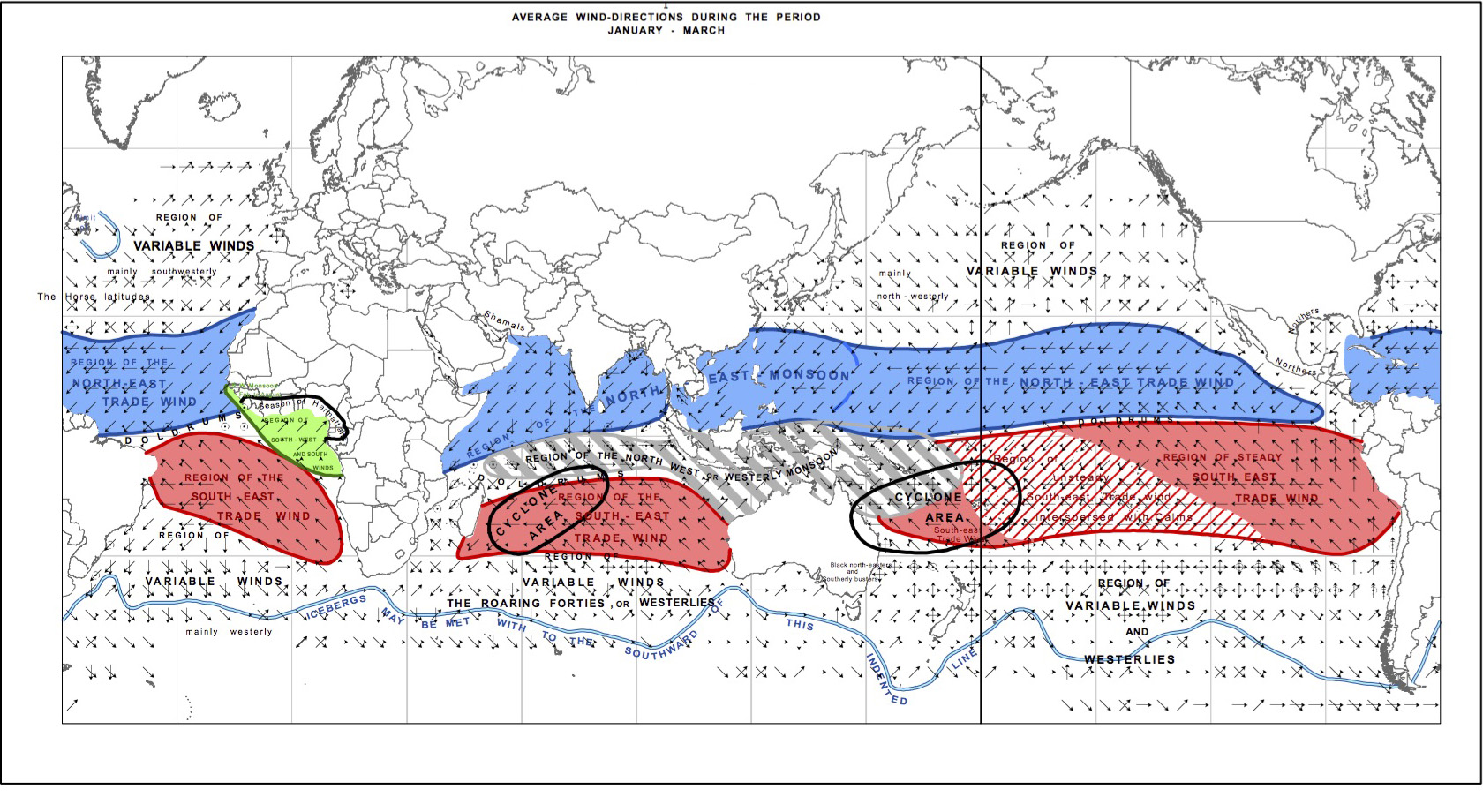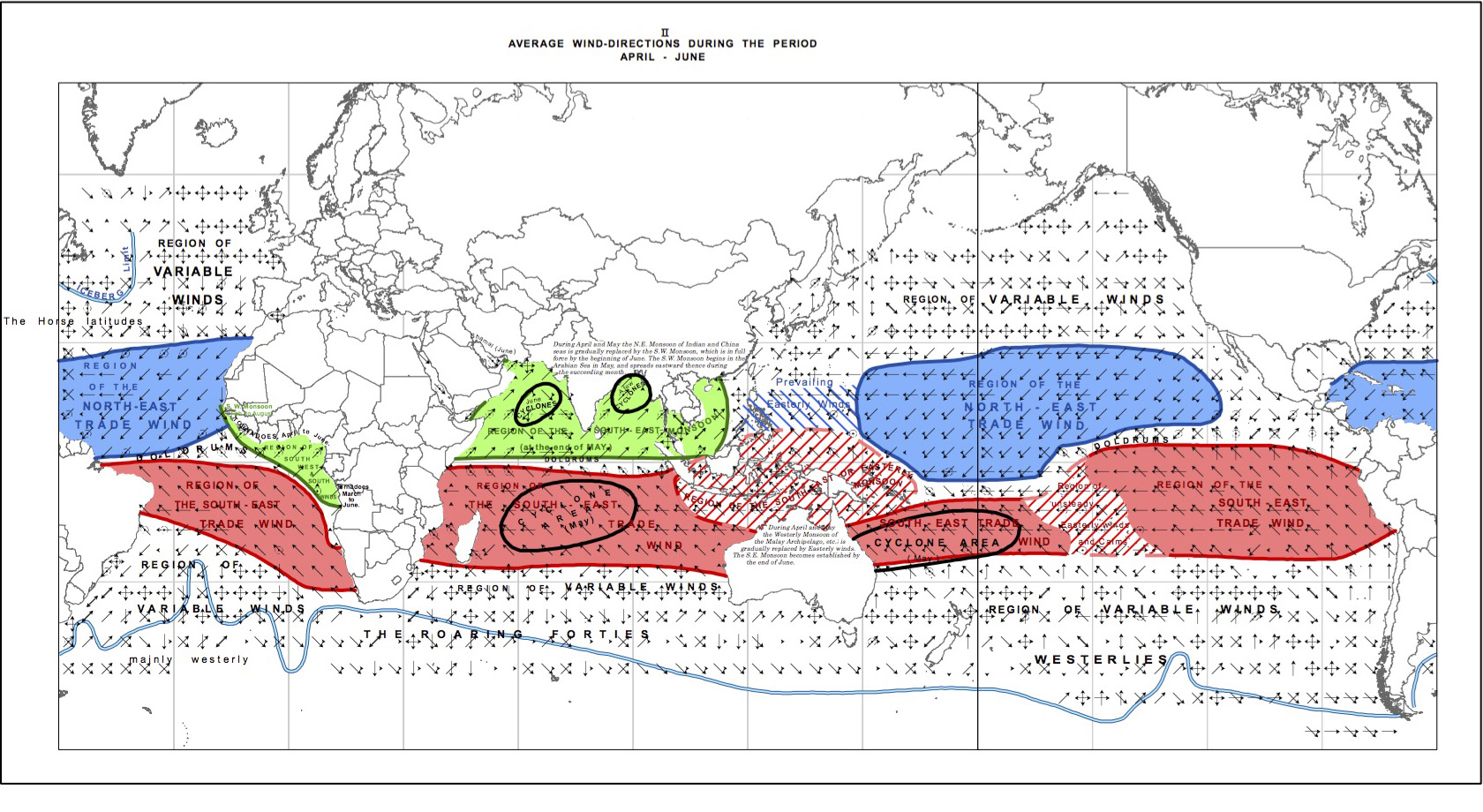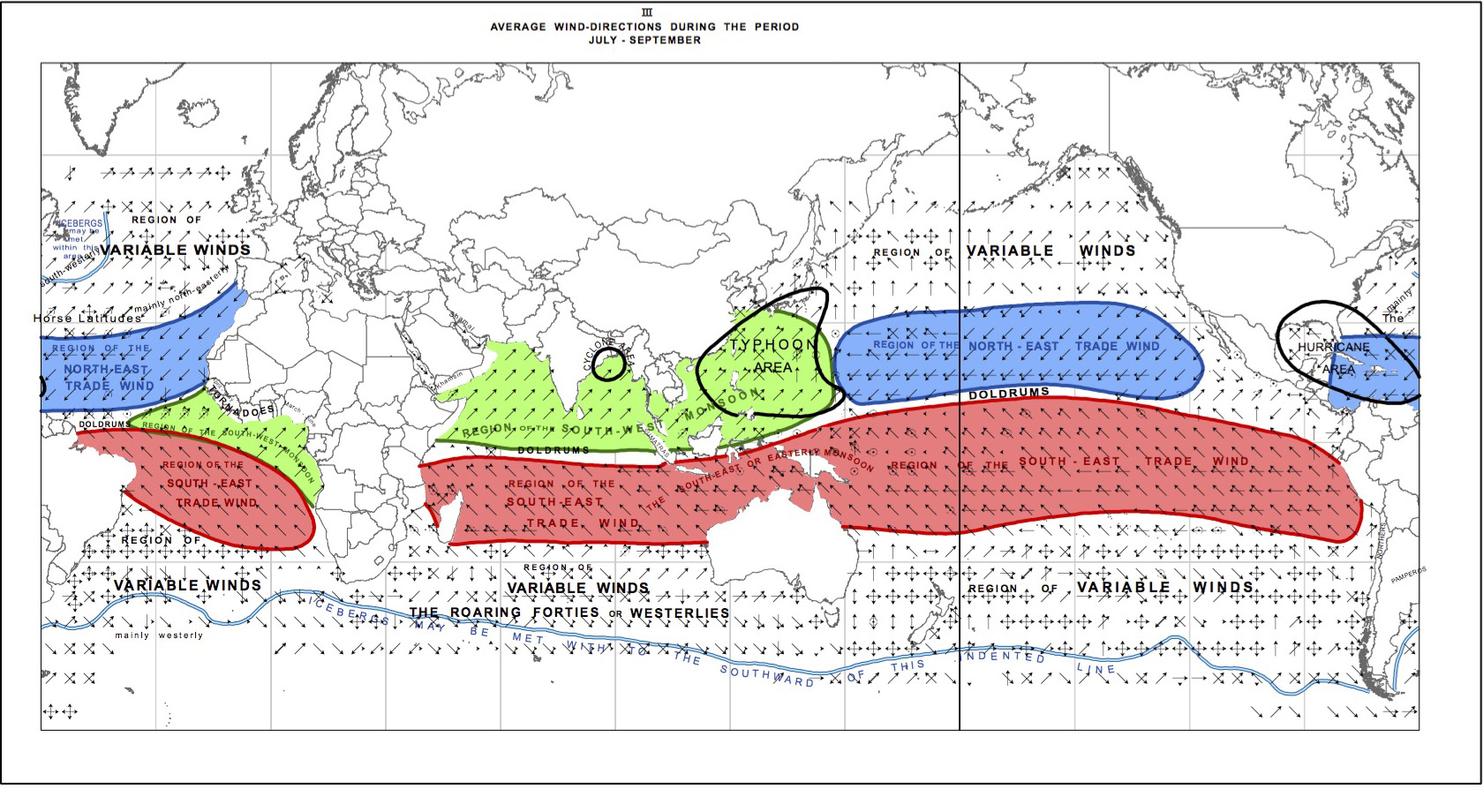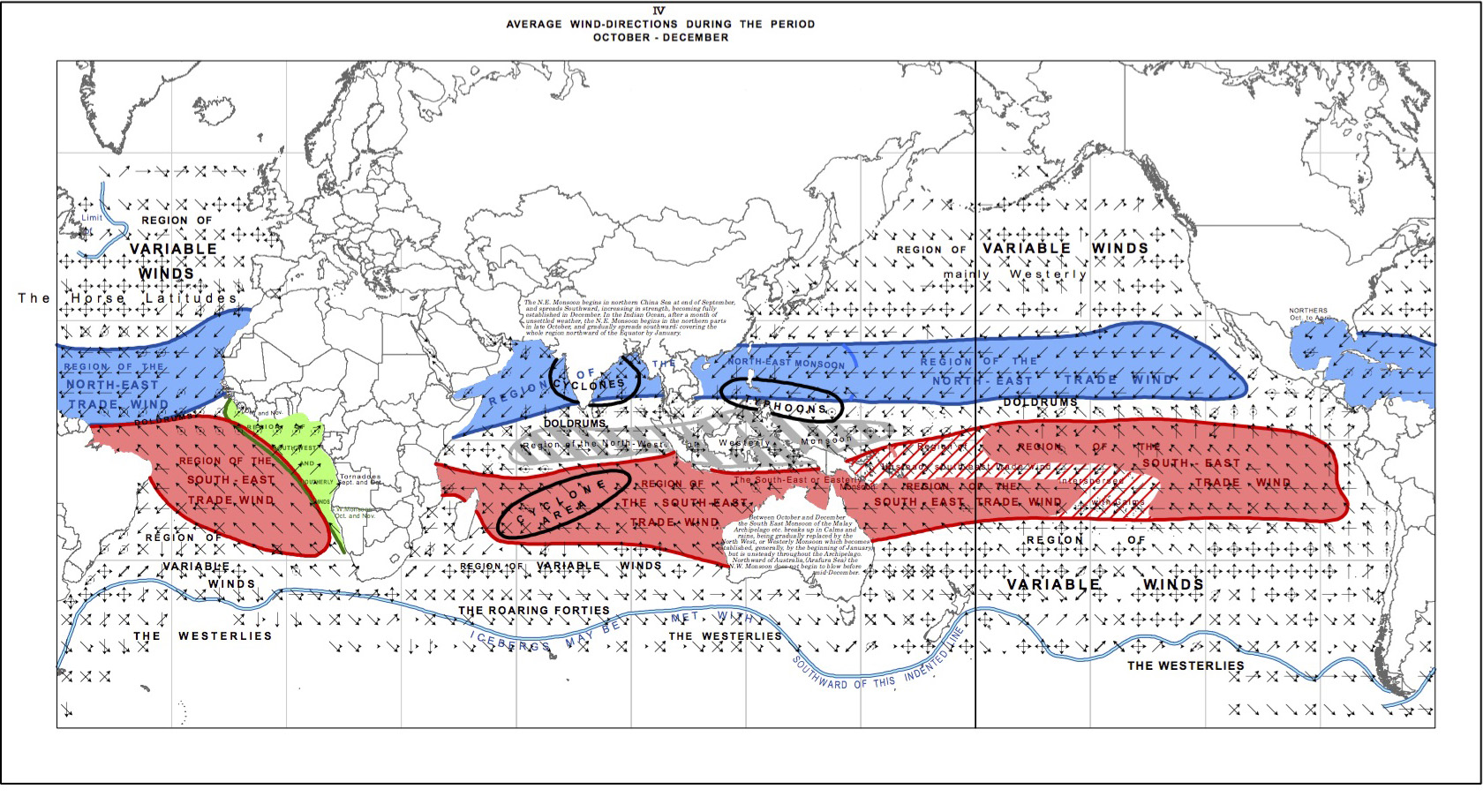
本書に収録された海流を図示したのが、Currentsである。アジア周辺の動向に限っていえば、インド用は各方向の海流があり、東南アジア方面にも西アジア~アフリカ方面にも航行しやすいように見える。南シナ海の海流は北から南向きであり、風向きによっては北から南への航行は困難なことが考えられる。中国沿岸は両方の方向の海流があるが、全体として南から北への海流が優勢であり、日本周辺は南西から北東への海流が優勢である。海流だけを考えると、日本からアジア諸国への航行は困難だといえる。
“Currents” denominate the ocean currents described in this book. Limiting ourselves to the flows around Asia, the Indian Ocean has multidirectional ocean currents, and it seems easy to navigate from both Southeast Asia and West Asia towards Africa. The current flows from north to south in the South China Sea and, depending on the direction of the wind, it may be difficult to navigate in the same direction as the current. However, the Chinese coast has ocean currents from both directions; however, overall, the south-north ocean currents are the strongest, while around Japan, the southwest-northeast ocean currents are the strongest. Considering only the aspect of ocean currents, it may be said that sailing from Japan to other Asian countries is challenging.




本書に収録された地図のうち、1~3月、4~6月、7~9月、10~12月の平均的な風向きを図示したのが、Wind_Ⅰ、Wind_Ⅱ、Wind_Ⅲ、Wind_Ⅳである。アジア周辺の動向に限っていえば、冬期(Wind_Ⅰ)は中国北部から日本へは北西の風、中国南部から東南アジアへは北東の風、東南アジア~西アジアでは北東の風が吹いている。したがって、帆船や機帆船の長距離貿易では西向きが適しているということになる。
春期(Wind_Ⅱ)は、東アジアからフィリピンにかけての地域では風向きが一定しない。東南アジア~西アジアでは南西の風が吹くが、アラビア海とベンガル湾でサイクロンが発生する。インド洋でもサイクロンが発生するため、全体として長距離の海上貿易に適しているとはいいがたい。
夏期(Wind_Ⅲ)は、アジア全域で南西の風が吹くが、ベンガル湾、東シナ海、南シナ海ではサイクロンや台風が発生する。これら暴風雨の影響は見過ごせないものの、全体として西向きの長距離貿易に適した季節といえる。
秋期(Wind_Ⅳ)は、中国北部から日本、およびインド南部では風が一定しないが、それ以外のアジア地域では一般に北東の風が吹く。ただし、フィリピン南部とインド周辺ではサイクロンや台風が発生する。長距離貿易では西向きが適しているといえるが、夏期と同様に暴風雨の影響を考慮せねばならない。
Among the maps included in this book, Wind_I, Wind_II, Wind_III, and Wind_IV illustrate the average wind directions of the following seasons, respectively: January to March, April to June, July to September, and October to December. Limiting ourselves to movements around Asia, during the winter season (Wind_I), a northwest wind blows from North China to Japan, a northeast wind blows from South China to Southeast Asia, and a northeast wind blows in the areas between Southeast Asia and West Asia. It follows that long-distance trade via sailing boats or motorized sailboats is best conducted westward.
During the spring season (Wind_II), the direction of the wind is unstable from East Asia to the Philippines. A southwest wind blows from Southeast Asia to West Asia, with cyclones occurring in the Arabian Sea and the Bay of Bengal. Because cyclones also occur in the Indian Ocean, it can be said that the season is not suitable for long-distance seaborne trade.
In the summer season (Wind_III), a southwest wind blows in the whole Asian region, with cyclones and typhoons occurring in the Bay of Bengal, the East China Sea, and the South China Sea. Although the impact of these rainstorms cannot be overlooked, it can be said that the season is suitable for long-distance westward trade.
During the autumn season (Wind_IV), an unstable wind blows from North China to Japan and in South India, but in other parts of Asia, a northeast wind is encountered. However, cyclones and typhoons occur in the South Philippines and around India. It may be said that the season is suitable for long-distance westward trade; however, similar to the summer season, the impact of rainstorms must be taken into consideration.
